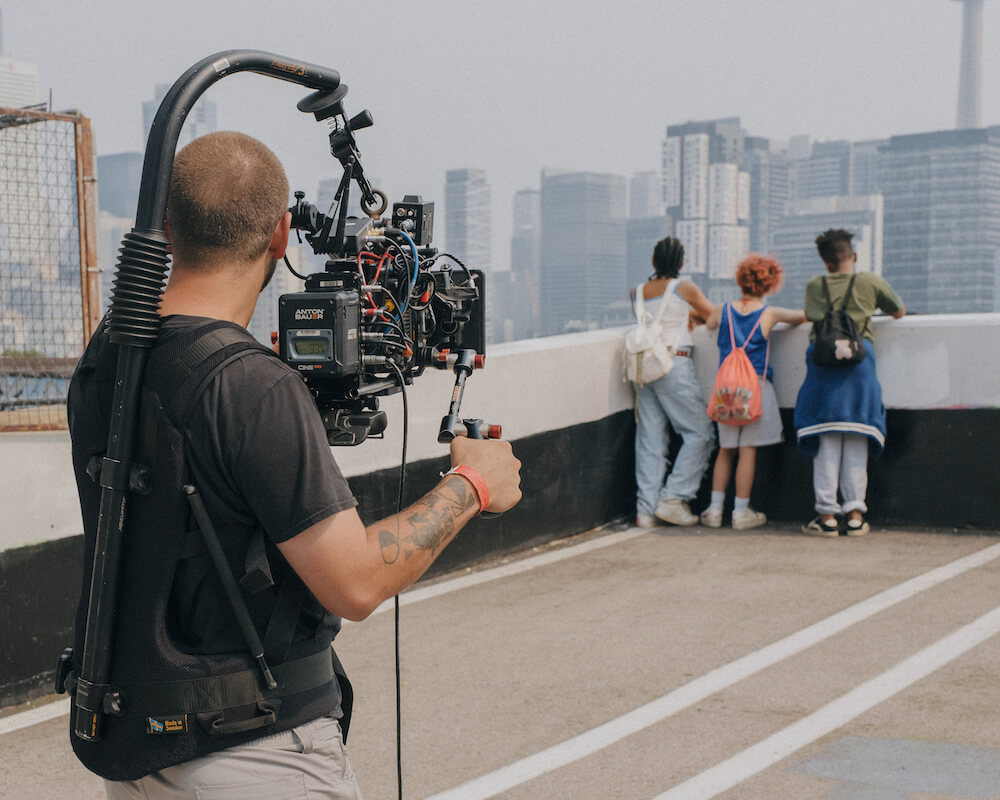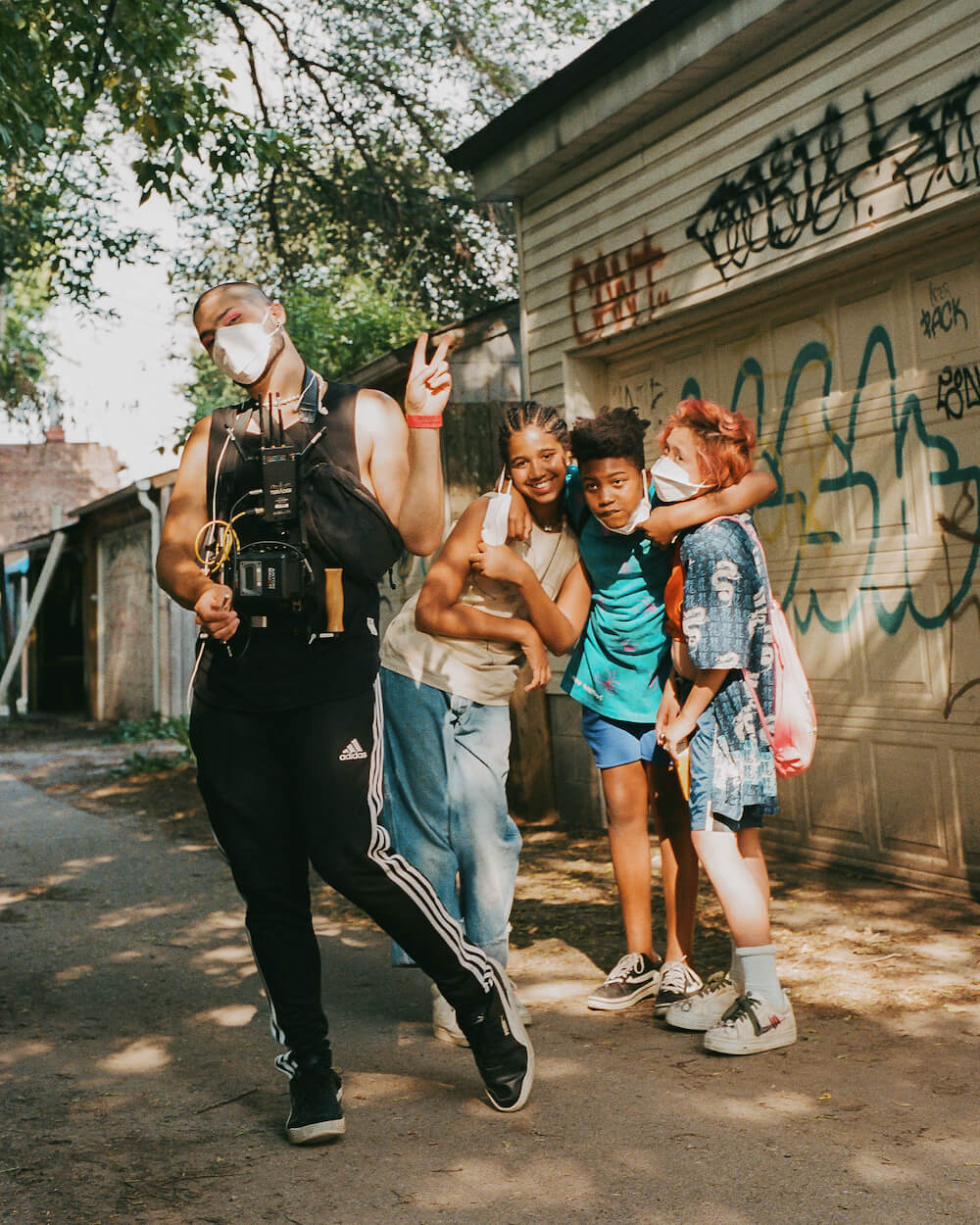Writer-director Joseph Amenta on the feature Soft

The feature Soft follows three adolescent queer friends as they navigate the pardons and perils of summer break in the streets of Toronto. Written and directed by Toronto-based filmmaker Joseph Amenta, the movie premiered at the 2022 Toronto International Film Festival and was photographed by cinematographer Liam Higgins, who utilized a Panavised Alexa Mini camera paired with a set of Primo lenses provided out Panavision Toronto. In this Q&A, Amenta stresses the importance of crafting a visual language that’s both authentic and approachable.
Panavision: How would you describe the look you wanted to achieve?
Joseph Amenta: I was fascinated with the juxtaposition of fantasy and reality, the idea of color and grit. I wanted the environments to feel like a wonderland for the kids and for the audience, a world we were continuously in motion through. The camera serves as a silent fourth member of the group; the gaze of the audience is not observing the kids omnisciently, but journeying with them.
What were your visual inspirations for Soft?
Amenta: From the outset, Jennie Livingston’s Paris Is Burning was a massive inspiration for the color palette and candid nature of the visuals. I’m attracted to how that film transforms small spaces into extravagant ones. The energy and roughness of Sean’s Baker’s Tangerine as well as Clayton Vomero’s short Gang were both big visual inspirations for the film. These works really illustrate the energy behind the camera that I was trying to capture — a sense of frivolity and power.

What brought you to Panavision for this project?
Amenta: Not only is Panavision an innovator and benchmark in the industry, but they’ve also shown interest in supporting various types of works. From the beginning, Panavision was on board with supporting the project and respected the material for what made it unique. That’s a rarity in this industry.
How did you and cinematographer Liam Higgins select the movie’s lens package? What optical qualities did you see in the Primos that made them right for this project?
Amenta: Liam and I wanted the film to feel authentic and imperfect, and the use of vintage Primo’s fit perfectly for the look we were trying to achieve. We were also really attracted to the 35mm for close-ups where the kids were experiencing freedom and friendship. That focal length helped to establish intimacy while keeping them all together in frame; this also helped keep our characters present in our low-lit, unpredictable environments. We used the 75mm in moments of intense movement in order to abstract the image, or in moments of stillness to allow the audience to rest and observe. It all really came down to us wanting to evoke a feeling of youth and energy clashing against the often harsh realities of life.
